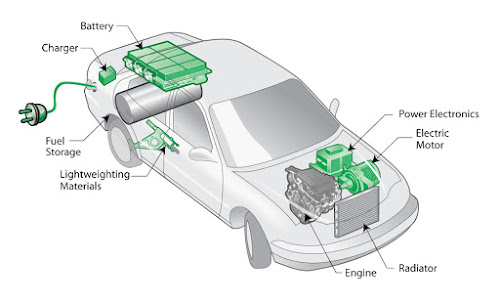Automobiles are an integral part of society. Human depended too much on it. As the population of India is increasing the number of automobiles also increases on the road. The more the vehicle on the road more would be the bad environment due to the dangerous gases like NOx, CO2, CO, HC, smoke, and PM.
 |
| Road Traffic |
The complete combustion of diesel in the combustion chamber
emits only CO2 and H2O. But due to the some of the
reasons (air-fuel ratio, fuel turbulence, combustion temperature, ignition
timing, etc.) ideal combustion did not take place and emits dangerous gases like
, CO2, CO, HC, smoke, and PM (particulate matter). These gases are listed below.
 |
| Harmful Emission from Automobiles |
Oxides of nitrogen mostly created from the nitrogen in the
air. The highest quantity of the NOx is produced by the diesel engine. CI
engine emits all three types of the oxides of nitrogen-N2O (nitrous
oxides), NO (Nitric oxides), and NO2 (Nitrogen Oxides). All three
gases are not suitable for a clean environment because they initiate the ozone
depletion, acid rain, eye’s problem other harmful things. High temperature and high pressure produce
high nitrogen oxides by the diesel engine. Burning of plant material also leads to
the higher oxides of the nitrogen from the engine. SCR (Selective Catalytic
Reduction) and SNCR (Selective Non-Catalytic Reduction) method are used to
remove the NOx from the exhaust gases. The quantity of NOx
reduction can be done by the EGR (Exhaust gas recirculation) or by decreasing the
combustion temperature. One of the methods
to reduce the NOx from the diesel engine is fuel additives.
CO2 gas is responsible for the greenhouse effect
and global warming. It does not directly affect the human being. Quantity of CO2
is the deciding factor of the health of the earth. Fuel economy is one of the
methods for reducing carbon dioxide. Efficiency comes into the frame with
the fuel economy. By enhancing the efficiency of the engine we can reduce the
quantity of the CO2.
It is a colorless and toxic gas. Carbon mono oxides
generated because of the incomplete combustion in the engine. High equivalence
ratio with the richness of the air-fuel mixture, the carbon mono oxides are
increases. CI engine emits less CO compare to the SI engine because of the lean
air-fuel ratio. At the starting of the CI engine, high CO generated due to the
rich mixture required for starting the engine. The amounts of CO in the human
body stop the supply of oxygen to the lung. A catalytic converter is a good method
for reducing carbon mono oxides from the exhaust gases. Another method of
minimizing the CO is fuel additives.
Not burnt fuel particle and incomplete combustion cause to
emit high hydrocarbon from the diesel engine. The low temperature was found near to the cylinder wall that causes a high-temperature zone at the center of
the cylinder. Hydrocarbon emission is also caused by the leakage past the
exhaust valve. Hydrocarbon is a big family of alkalis, alkaline, and
aromatic. Usually, the hydrocarbons are generated at the low load condition on
the engine. Quantities of the HC from the engine depending upon the type of fuel,
engine design. Besides that irregular operating condition causes the high HC.
Hydrocarbon is toxic and promotes dangerous diseases like cancer and
irritation. The catalytic converter, fuel additive, and electronic fuel injection
system have the capability to reduce the HC from exhaust gases.
Smoke is the solid and liquid particles of the exhaust
gases. Excessively black smoke indicates the solid or carbon particle (soot) of
the exhaust gases. White smoke emitted because of the presence of vaporized water and not burnt fuel particles. Blue smoke is generated due to the higher
concentration of not burnt fuel particles.
Particulate Matter (PM) is the second-highest gas emission from
the CI Engine. PM can be defined as “any matter other than water from the
diesel engine exhaust”.














